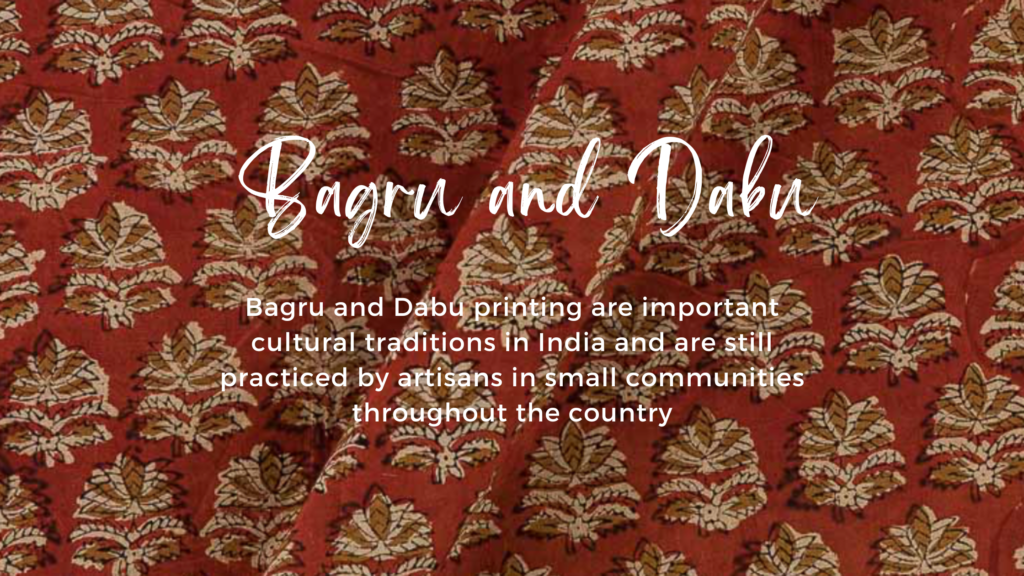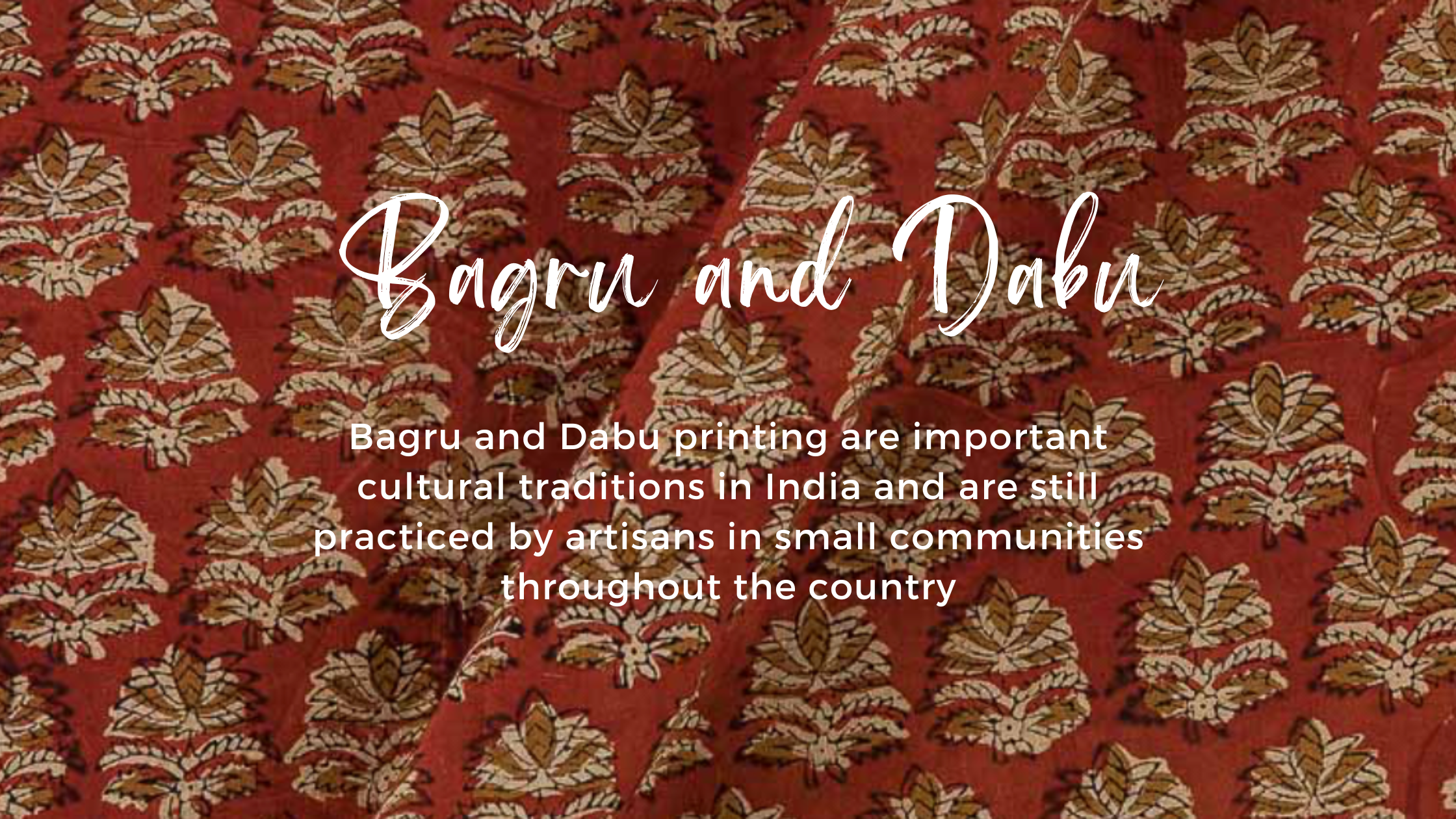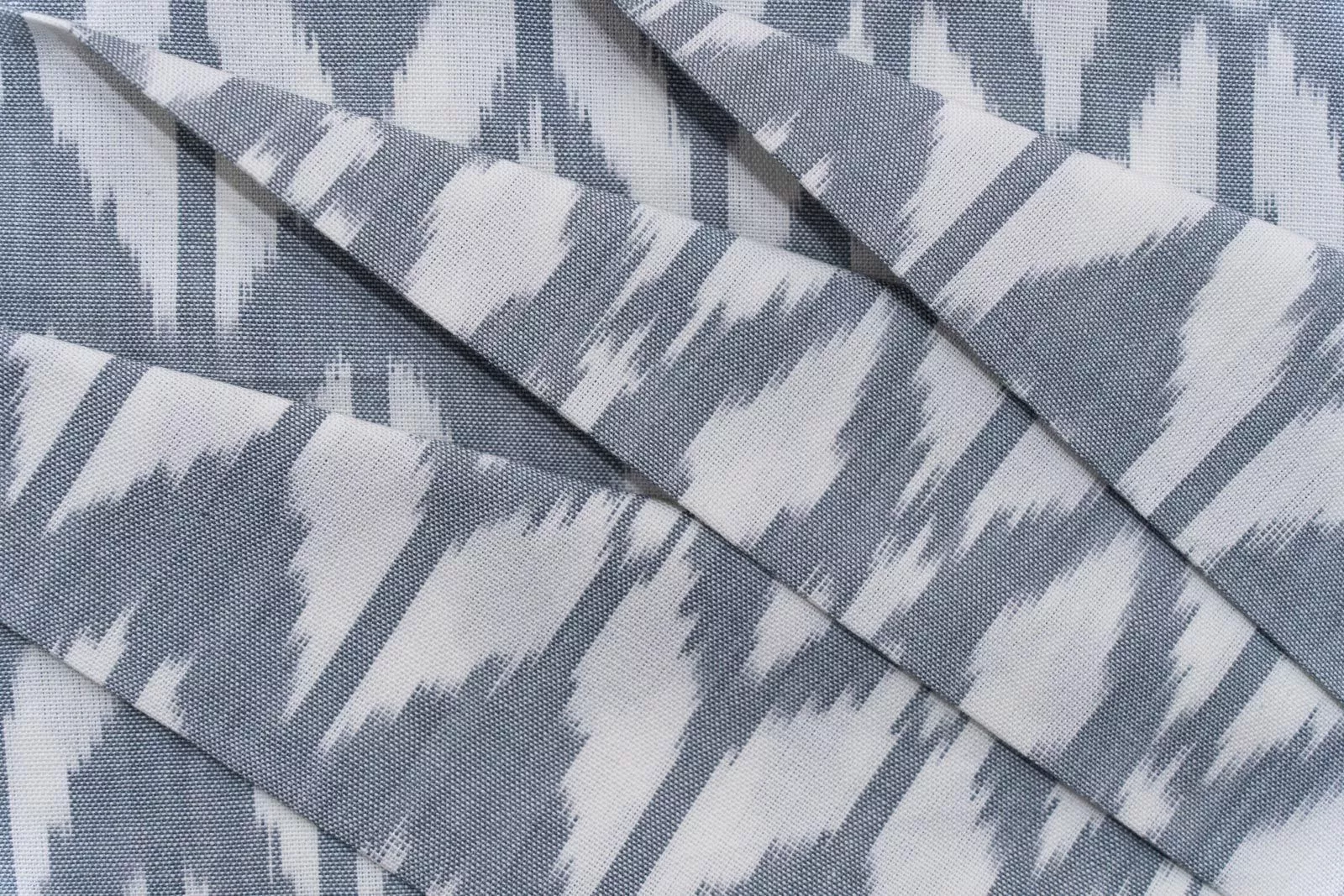
Bagru and Dabu are two traditional textile printing techniques that have been practiced in India for centuries. These techniques have been used to create beautiful and unique designs on fabric, which are then used to make clothing, home decor, and other products.
Bagru is a small town located in the western Indian state of Rajasthan, known for its unique printing technique that involves the use of natural dyes and intricate wooden blocks. The process starts with preparing the fabric, which is first washed to remove any impurities and then soaked in a mixture of myrobalan and water to give it a yellowish hue. The fabric is then dyed using natural dyes, which are derived from plants and herbs, such as indigo, pomegranate, and turmeric. The dyeing process is repeated several times to achieve the desired color.
Once the fabric has been dyed, it is ready for printing. The printing blocks are made of wood and have intricate designs carved into them. The designs are then stamped onto the fabric using a mixture of mud, water, and lime. This process is repeated several times to create a complex and layered design. Finally, the fabric is washed and dried to remove the mud and reveal the beautiful printed design.
Dabu, on the other hand, is a printing technique that involves the use of a mud resist to create intricate patterns on fabric. The process starts with preparing the fabric, which is first washed and soaked in a mixture of water and a natural mordant, such as alum, to help the dye adhere to the fabric. The fabric is then dried and stamped with a mixture of mud, gum arabic, and lime, which acts as a resist to the dye. The fabric is then dyed using natural dyes, which penetrate the areas of the fabric that are not covered by the mud resist.
Once the dyeing process is complete, the fabric is washed and dried to remove the mud resist and reveal the intricate patterns created by the resist. Dabu printing is often done in combination with other printing techniques, such as block printing and screen printing, to create complex and unique designs.
Both Bagru and Dabu printing are important cultural traditions in India and are still practiced by artisans in small communities throughout the country. These techniques not only create beautiful and unique designs but also promote sustainable and eco-friendly practices by using natural dyes and materials. Additionally, the continued practice of these techniques helps to preserve India’s rich cultural heritage and promote traditional handicrafts in the modern world.
In conclusion, Bagru and Dabu are two traditional textile printing techniques that have been practiced in India for centuries. These techniques involve the use of natural dyes and intricate designs to create beautiful and unique patterns on fabric. The continued practice of these techniques not only promotes sustainable and eco-friendly practices but also helps to preserve India’s rich cultural heritage.




Leave a comment